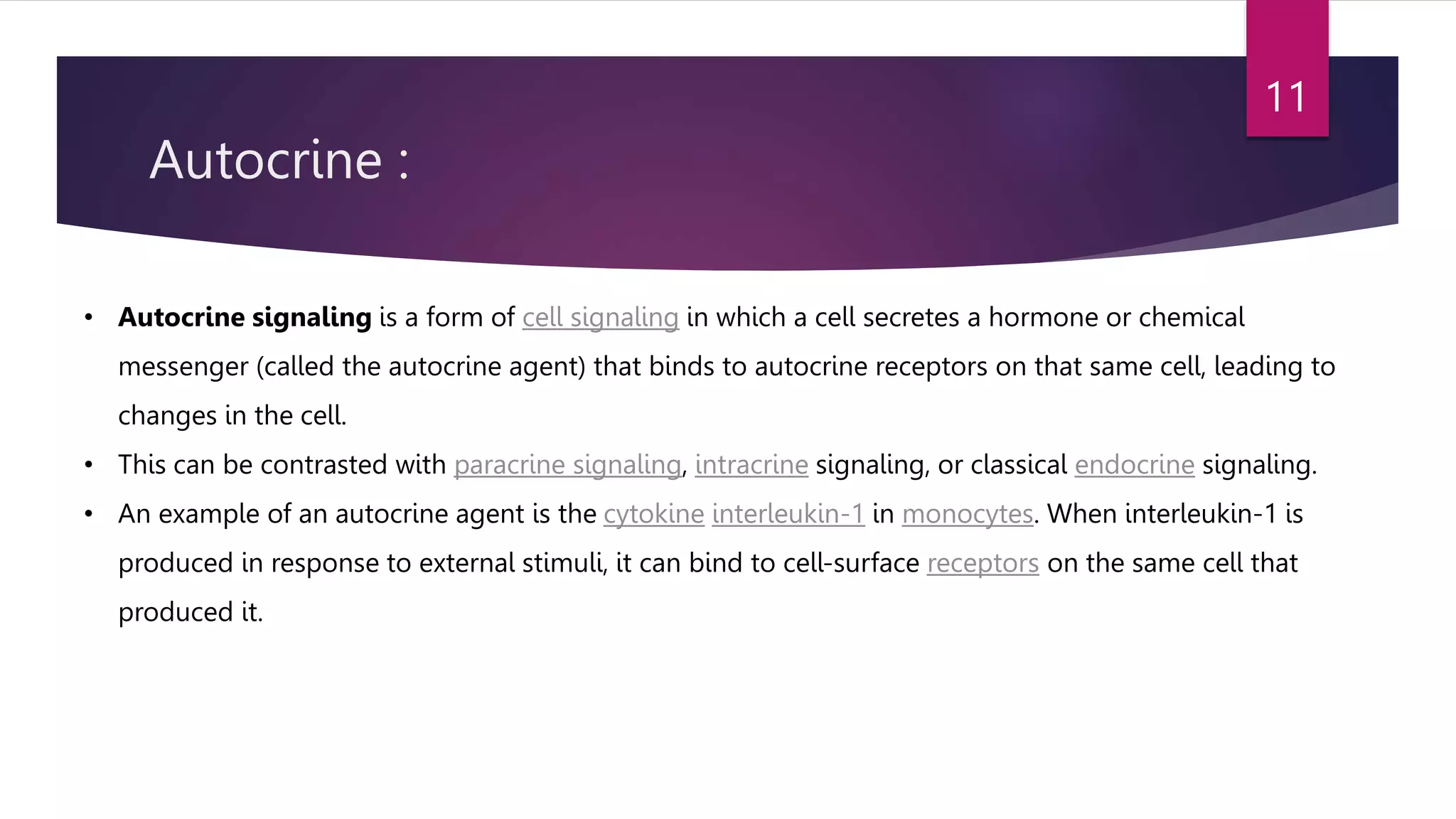The document discusses cell signaling, which is essential for communication between cells and involves the reception, processing, and transmission of signals. It categorizes cell signaling into types such as autocrine, paracrine, endocrine, and juxtacrine, emphasizing the role of signaling molecules and receptors in these processes. Additionally, it highlights the importance of signaling in various biological functions and disease mechanisms.
















